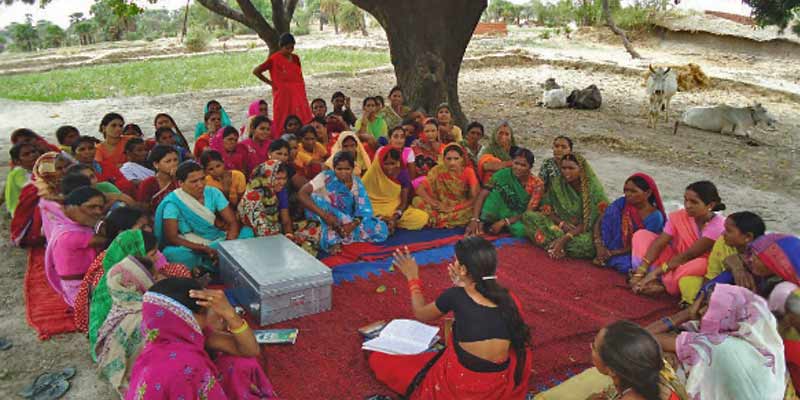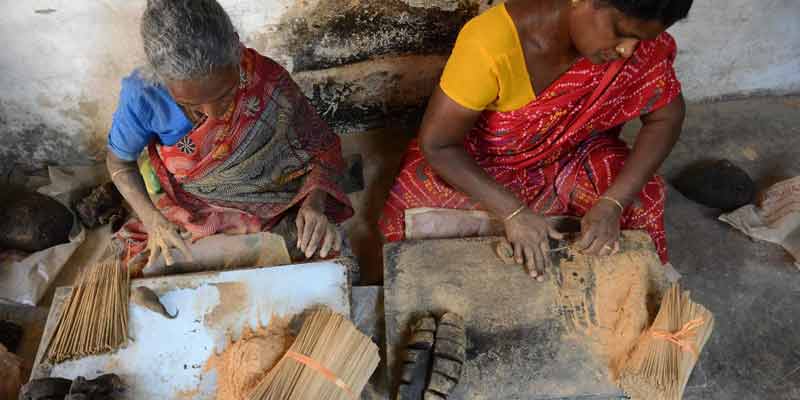- India
- Feb 14
Role of self-help groups in women’s empowerment
• The percentage of the population living in India’s rural areas was as high as around 80 per cent in the 1960s and remained over 70 per cent till 2007. According to Economic Survey 2022-23, it stands at 65 per cent for 2021.
• Further, 47 per cent of the population is dependent on agriculture for livelihood. Thus, the focus of the government on rural development is imperative. The emphasis has been on improving the quality of life in rural areas to ensure more equitable and inclusive development.
• Various measures have been taken to enhance the quality of life in rural areas encompassing rural housing, drinking water, and sanitation, clean fuel, social protection, rural connectivity along with enhancing rural livelihoods.
• The financing needs of rural households and small businesses are being met through microfinance institutions, self-help groups (SHGs), and other financial intermediaries.
• It may be noted that more than 75 per cent of rural female workers are employed in the agricultural sector. This implies a need to upskill and create employment for women in agriculture-related sectors such as food processing.
• Here, the self-help groups can play a crucial role in shaping rural women’s potential into concrete developmental outcomes of financial inclusion, livelihood diversification, and skill development.
• SHGs, having demonstrated their resilience and flexibility during the pandemic, can be an effective conduit to tap the rising willingness of females to work. The 1.2 crore SHGs cater to 14.2 crore households.
Transformative potential of SHGs
• The self-help groups (SHGs) movement, based on the principles of group solidarity and microfinance, has existed in India for 50 years in one form or another, with its roots tracing back to the formation of the Self-Employed Women’s Association in 1972.
• An SHG is a socially and economically homogenous group of up to 20 persons, formed voluntarily for the collective purpose of savings and credit, with no insistence on collateral for loans and end usage of credit.
• These SHGs are federated at the village/gram panchayat, cluster and block level. The institutions provide services (savings, credit, livelihood support) to their members that help them strengthen and sustain livelihoods.
• The transformative potential of SHGs, exemplified through their key role in the on-ground response to COVID-19, has served as the fulcrum of rural development through women empowerment.
• India has around 1.2 crore SHGs, 88 per cent being all-women SHGs. Success stories include Kudumbashree in Kerala, Jeevika in Bihar, Mahila Arthik Vikas Mahila Mandal in Maharashtra, and recently, Looms of Ladakh.
• The SHG Bank Linkage Project (SHG-BLP), launched in 1992, has blossomed into the world’s largest microfinance project.
• The SHG movement has emerged as a powerful intervention to cover the small and marginalised sections.
• Currently, bank-linked SHGs are promoted through central government, state governments, NGOs, etc. They must practice the ‘Panchasutra’ of regular meetings, regular savings, regular inter-loaning, timely repayment and up-to-date books of accounts to avail of loans from banks.
• With the active collaboration of stakeholders, the SHG-BLP covers 14.2 crore families through 119 lakh SHGs with savings deposits of Rs 47,240.5 crore and 67 lakh groups with collateral-free loans outstanding of Rs 1,51,051.3 crore, as on March 31, 2022.
• The number of SHGs credit linked has grown at a CAGR of 10.8 per cent during the last ten years (FY13 to FY22), while credit disbursement per SHG has grown at a CAGR of 5.7 per cent during the same period.
• Notably, SHGs’ bank repayment is more than 96 per cent, underscoring their credit discipline and reliability.
Empowered Women, Empowered Hinterland
• Deendayal Antyodaya Yojana-National Rural Livelihood Mission has achieved success by mobilising rural women into 81 lakh self-help groups.
• Women’s economic SHGs have a positive, statistically significant effect on women’s economic, social, and political empowerment, with positive effects on empowerment achieved through various pathways such as familiarity with handling money, financial decision-making, improved social networks, asset ownership and livelihood diversification.
• According to an assessment of DAY-National Rural Livelihood Mission, both participants and functionaries perceived high impacts of the programme in areas related to women empowerment, self-esteem enhancement, personality development, and reduced social evils.
• Additionally, medium impacts in terms of better education, higher participation in village institutions and better access to government schemes.
Deendayal Antyodaya Yojana-National Rural Livelihoods Mission
• Aajeevika-National Rural Livelihoods Mission (NRLM) was launched by the ministry of rural development in June 2011.
• It was later renamed as Deendayal Antyodaya Yojana-National Rural Livelihoods Mission (DAY-NRLM).
• The Mission is for creating efficient and effective institutional platforms for the rural poor enabling them to increase household income through sustainable livelihood enhancements and improved access to financial services.
• It seeks to reach out to 8-9 crore rural poor households and organise one woman member from each household into affinity-based women self-help groups (SHGs) and federations at village level and at higher levels.
• It will then provide them long-term support to diversify their livelihoods, improve their incomes and quality of life.
Manorama Yearbook app is now available on Google Play Store and iOS App Store



